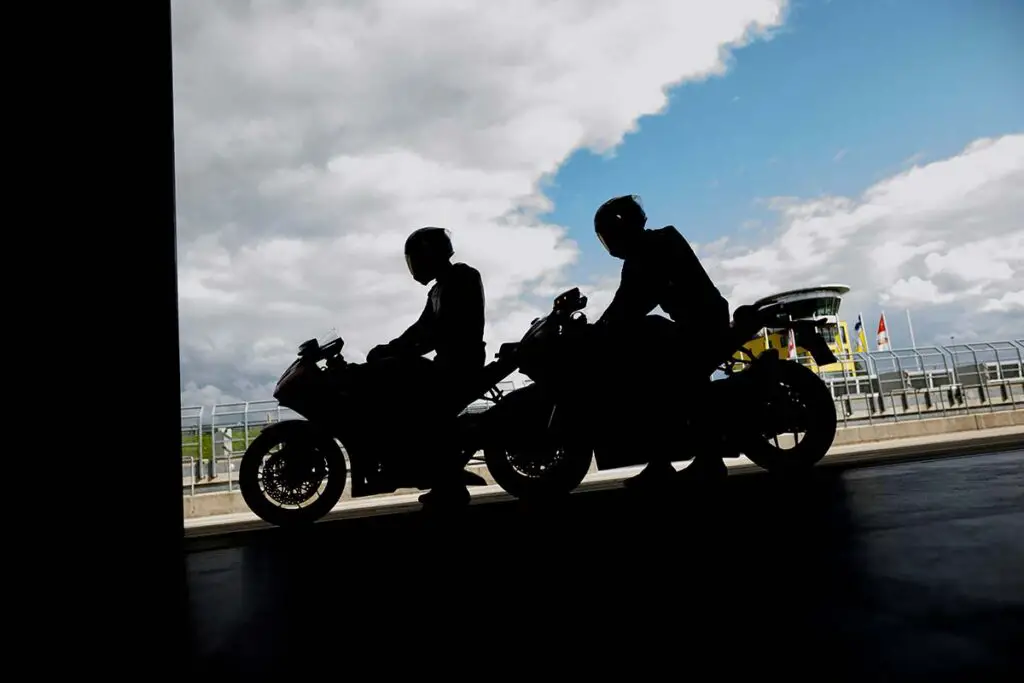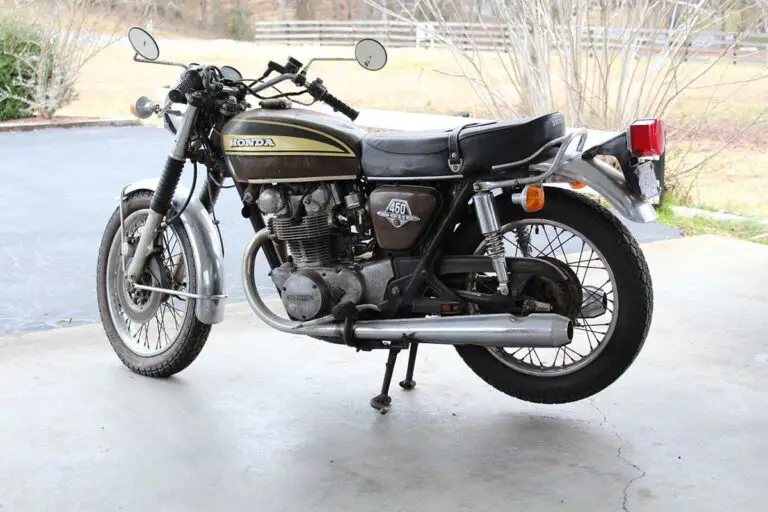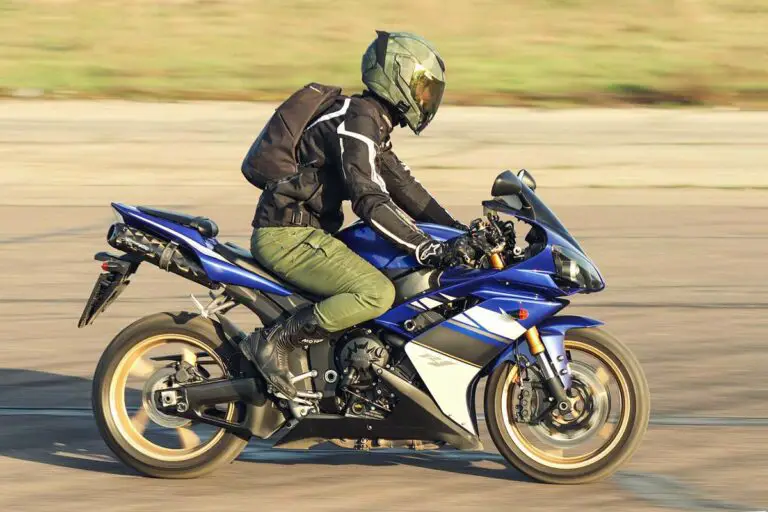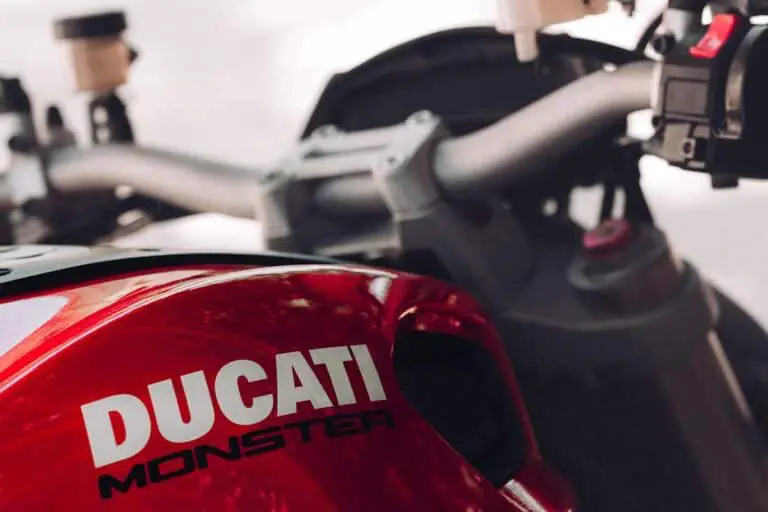2008 Kawasaki Ninja 250R Specs and Review
Disclosure: We may get commissions for purchases made through links in this post.
In 2008, the Kawasaki Ninja 250R took its loyal following by surprise with a major overhaul and its slew of then-new features. The improvements it received, fused with its approachable nature, helped secure its place among the top preferences for an entry-level motorcycle – making it one of Team Green’s best-selling sport bikes.
The 2008 Kawasaki Ninja 250R is the 13th-year installment of the sport bike label launched by Kawasaki in 1986. It is the first in its series to sport a new fuel gauge, larger-diameter hydraulic discs, and a full fairing. This pocket rocket also boasts a tamed dual-carb mill and a 110-mph top speed.
Agility, superb handling, sport-oriented ergos, and styling are only a few of the endearing qualities of this scaled-down supersport bike. Intrigued about what else the 2008 Ninja 250R has to offer? Stick around and continue learning about this reputable two-wheeler in today’s article.

Revitalizing the Ninja 250R Series
The 2008 Kawasaki Ninja 250R or EX250-J is the 6th model installment of the 250R label that debuted in the mid-’80s. This two-wheeler hails from the prestigious Kawasaki Ninja series, considered by many to be Team Green’s best-selling sport bike. Over time, the 250-cc Ninja has evolved into fuel-injected mini beasts, with 300- and 400-cc spin-offs sold in Europe and North America.
Despite its 23-year production run, the Kawasaki Ninja 250R seemed like the “new kid on the block” when it released its 2008 incarnation. The bike looked nothing like its predecessors – with its aggressive bodywork, tuned powerplant, and eye-catching full fairing finished in simple yet handsome hues. These upgrades were a breath of fresh air for a segment dominated by cruisers and a lineup that remained untouched for over two decades.
Improvements
(This list is non-exhaustive.)
- The 250R’s parallel-twin received revised cams and a new 2-into-1 exhaust, enhancing low/midrange pull.
- Intake and exhaust ports were refined, and a new fuel gauge was added to the instrument panel.
- The compression ratio dropped from 12.4:1 to 11.6:1.
- Modifications to the engine and exhaust improved throttle responsiveness below 6,000 RPM and reduced shuddering at higher revs.
- The Ninja’s 6-speed gearbox received new shaft splines. Meanwhile, the dual Keihin CVK30 carburetors got revised jetting.
- Diamond steel framing is new and more rigid than the previous year’s chassis.
- Stock wheel size upgraded to 17 inches and mated to hydraulic front forks and a rear UNI-TRAK® suspension.
- New dual headlights, taillight, and turn signals with clear lenses were added to its lighting assembly.
- The front disc brake diameter increased from 260-290 mm, while the rear disc stayed within 220-230 mm.
- The Kawasaki Ninja 250’s seat is slightly taller at 30.5 inches for 2008.
2008 Kawasaki Ninja 250R Specs & Features (EX250-J)
Engine
The Ninja 250R roars to life via a liquid-cooled, twin-cylinder 4-stroke DOHC engine and an electric starting system. It has a bore-stroke ratio of 62 × 41.2 mm (2.44 × 1.62 inches), an 11.6:1 compression ratio, and a displacement of 249 cm3 (15.2 in3).
In the United States, pistons are supplemented by 2008 Kawasaki Ninja 250R carburetors consisting of dual 30-mm constant-velocity Keihins. But for bikes sold in Europe and elsewhere, fuel injection took care of the air-fuel mixture.
The above engine configuration translates to the following performance figures:
| Description | Performance Figure |
|---|---|
| Top Speed | 97.6–110 mph (157–177 km/h) |
| Horsepower | 29.9–45 bhp (22.3–33.5 kW) @ 10,500–11,000 RPM |
| Maximum Torque | 20.6–24 Nm (2.10–2.45 kgf-m, 16–17.7 ft-lbf) @ 9,500–10,000 RPM |
Fuel & Lubrication
The Kawasaki Ninja 250R 2008 tank capacity is 18 L (4.8 US gal, reserve amount unspecified) of regular unleaded gasoline with a minimum octane rating of PON 87/RON 91. This capacity yields an average combined gas mileage of 52.3–80 mpg (2.9–4.5 L/100 km) per forums and other sources and can even reach 100 mpg (2.35 L/100 km) after doing simple mods.
Permissible fuel variants should be unleaded gasoline with less than 15% MTBE (Methyl Tertiary Butyl Ether), 16.7% TAME (Tert–Amyl Methyl Ether), or 17.2% ETBE (Ethyl Tertiary Butyl Ether). Oxygenates/gasohol blends containing no more than 10% ethanol or 5% methanol are also allowed.
Lube-wise, the ’08 Kawasaki Ninja 250R has a Forced lubrication (wet sump) system that requires SAE 10W-40 motor oil with a minimum API grade of SJ or SL and meeting JASO T903 MA, MA1, or MA2 standards. You may use other viscosity grades specified in the manual following changes in ambient temperature and riding conditions. Below are the two-wheeler’s engine oil requirements for your reference:
| Description | Quantity |
|---|---|
| Without oil filter cartridge replacement | 1.3 L (1.4 US qt) |
| With oil filter cartridge replacement | 1.6 L (1.7 US qt) |
| At draining or when completely dry | 1.7 L (1.8 US qt) |
| Coolant capacity | 1.5 L (1.6 US qt) |
Drivetrain
A 6-speed manual gearbox and wet, multi-plate clutch assembly deliver power to the ground for the Ninja 250R. The cable-actuated clutch handles power delivery, while a #520 O-ring chain controls wheelspin.
Seat-to-footpeg reach is comfortable – a feature that riders of all skill levels are sure to value. Additionally, the bike’s powertrain is equipped with a positive, neutral finder, a gear-driven balancer, and a valve gear – little details that make for smooth shifting, reduced engine shuddering, and improved air intake efficiency.
| Description | Ratio |
|---|---|
| Primary Reduction Ratio | 3.087 (71/23) |
| Final Reduction Ratio | 3.214 (45/14) |
| Transmission Gear Ratio – I | 2.600 (39/15) |
| Transmission Gear Ratio – II | 1.789 (34/19) |
| Transmission Gear Ratio – III | 1.409 (31/22) |
| Transmission Gear Ratio – IV | 1.160 (29/25) |
| Transmission Gear Ratio – V | 1.000 (27/27) |
| Transmission Gear Ratio – VI | 0.893 (25/28) |
| Overall Drive Ratio | 8.859 (Top gear) |
Ignition & Lighting
The 2008 Ninja 250 has a battery & coil transistorized ignition (TCBI) with an electronic advance, an electric starter, and an ignition timing of 10° BTDC @1,300 RPM (initial “F” mark) and 35° BTDC @4,000 RPM (full advance). It uses an NGK CR8E or Nippon Denso U24ESR-N spark plug with a 0.7–0.8 mm (0.028–0.032 inch) electrode gap and a 13 Nm (1.3 kgf-m, 10 ft-lbf) tightening torque spec for spark ignition.
Its charging system is a triple-phase A.C. alternator, while a 12V 6Ah/(10 HR) YTX7A-BS battery (view on Amazon) powers lighting and electronic accessories. Battery dimensions are 150 x 87 x 94 mm (6.00 x 3.44 x 3.75 inches – L x W x H). Despite relatively similar sizes, this battery format is not interchangeable with the one used on 2009 Ninja iterations due to reverse terminal polarities.
To prevent premature wear or damage, refrain from continuously operating the electric starter for longer than five seconds. Immediately start the engine after turning the ignition on, and (ideally) only use OEM-recommended trickle chargers and battery maintainers. Aftermarket options like NOCO GENIUS2X4 4-Bank, 8A (2A/Bank) Fully-Automatic Smart Charger (view on Amazon) are great alternatives if manufacturer suggestions are unavailable.
As for its lighting assembly, see the specifics below:
| Description | Wattage x Quantity |
|---|---|
| Headlight, High-beam | 12V 55 W x 2 |
| Headlight, Low-beam | 12V 55 W x 1 |
| Tail/Brake Light | 12V 5/21 W x 1 |
Tires & Brakes
The 250-cc Ninja is fitted with 17-inch tubeless tires mounted on 17 × 2.75 (front) and 17 × 3.50 (rear) rims. These tires could be one of three brands – IRC, Bridgestone, or Dunlop. Recommended cold-tire pressure for these knobbies are 200 kPa (2.00 Kgf/cm², 28 psi) at the front and 225 kPa (2.25 Kgf/cm², 32 psi) at the back – again, these values can be adjusted to match changes in terrain and riding altitude.
Finally, a single 260-/290-mm front and 230-/220-mm rear petal rotors (each with twin-piston calipers) complete the Ninja’s tire-and-wheel assembly.
| OEM Tire Brand | Front | Rear |
|---|---|---|
| IRC “RX-01F/R” TL | 110/70-17 M/C 54S | 130/70-17 M/C 62S |
| Bridgestone “BT-45F/R” TL | 110/70-17 M/C 54H | 130/70-17 M/C 62H |
| Dunlop “GT501FG/R” TL | 110/70-17 M/C 54H | 130/70-17 M/C 62H |
Unlike front tires that can be easily swapped out for aftermarket Pirellis when damaged, rear tires are more challenging to replace because of their sizing. It is advisable to get same-size OEM tires – if not something closely relative to stock size like a DUNLOP Sportmax GPR-300 Rear Tire, 140/70R17 (view on Amazon).
You may find creative takes on tire replacement options in Ninja-dedicated forums. But to side with caution, it is best not to interchange front and rear tires (especially if they are non-OEM).
Suspension
37-mm Kayaba telescopic front forks and a bottom-link UNI-TRAK® swingarm with a gas mono-shock and 5-way spring preload adjustment are enclosed in the Kawasaki Ninja 250 2008’s tubular diamond steel frame (26° caster angle; 82-mm/3.2-inch trail). These respective suspension units provide wheel travel of 140 mm (5.5 inches) and 130 mm (5.1 inches), similar to the sport bike’s successor.
Like the 2009 iteration, the wheelbase measures 1,400 mm (55.12 inches) and road clearance 130 mm (5.12 inches). Together, they lend to the bike’s on-road stability and steering responsiveness. However, publications like Top Speed show a ± 0.76% difference in the Ninja’s wheelbase and clearance values.
Dimensions
The Ninja 250R’s overall dimensions are 2,085 x 715 x 1,110 mm (82.09 x 28.15 x 43.70 inches – L x W x H). Meanwhile, its seat height measures 785 ± 0.64% mm (30.91 inches, unloaded). Dry weight is 152 ± 0.6% Kg (335 lbs.), while curb weight is 170 Kg ± 2.3% (374.8 lbs.).
Including rider/passenger weights, cargo, and accessories, the two-wheeler has an estimated Gross Vehicle Weight Rating of 345 Kg (760.6 lbs.) and can support a maximum load limit of 170 Kg (375 lbs.).
Exterior
The 2008 Ninja 250R was the first to sport the long-overdue upgrades of the sport bike lineup. Its new full fairing and windscreen, inspired by top-of-the-line Kawie supersport wheelers, gave it a much-needed facelift (not to mention improved wind protection). Clean lines and a sharp lighting assembly design accentuate the bike’s best-in-class ergonomics and styling. A two-up layout was optional and can be had for less than $100.
The ’08 models were available in Lime Green, Ebony, Candy Plasma Blue, and Passion Red. These colors were reminiscent of Team Green’s flagship two-wheelers like the ZX-10R and ZX-6R. But if these features do not suffice, you can avail of a 2008 Kawasaki Ninja 250R fairing kit from the dealership or equivalent aftermarket options like XKMT- K0208- Fairing Kit Fit For Replacement Of Kawasaki Ninja 250R EX250 2008-2012 (view on Amazon).
Worth of a Kawasaki 2008 Ninja 250R
Per Nada Guides data, the original list price of the US-released Kawasaki EX250J8F Ninja 250R is $3,499, with retail/trade-in values within $1,395–$1,835. This amount is $500 cheaper than its 2009 version – understandable for a production model that did not put out special-edition trims.
Interestingly, auction listings average between $1,497 and $3,777 (higher than Nada Guides estimates). These used bikes are mostly in Lime Green or Red and rarely in Blue or Ebony. If you are curious to know where to find the best deals, head over to North Carolina, Pennsylvania, Minnesota, and California, as the majority of pre-loved Ninjas are based in these locations.
About Kawasaki
Kawasaki Heavy Industries Ltd. (KHI, Kawasaki Jūkōgyō Kabushiki-gaisha, or Kawasaki) is a global leader in heavy equipment, industrial engine, ATVs, and motorcycle production. The Japanese firm was conceptualized by Shōzō Kawasaki at a very young age but was only set in motion in 1878.
Operations began in a shipyard in Tokyo and later moved to Hyogo, where the company went public and officially established itself as Kawasaki Dockyard Co., Ltd in October of 1896.
Kawasaki went through a roller coaster of wins and losses but had not looked back since. Eventually, the firm pulled out of the shipbuilding industry and decided to expand its expertise by venturing into other fields.
The decision to diversify the company’s industry contributions and product offerings saved Kawasaki from bankruptcy and birthed several groundbreaking vehicles and motorcycles – among them the 2008 Kawasaki Ninja 250R.
Conclusion – 2008 Kawasaki Ninja 250R Review
In a motorcycle landscape where 100 km/h is past the highway speed limit and anything more can land you a fine pricier than your prized two-wheeler’s original MSRP, the 2008 Kawasaki Ninja 250R proves that less is more. While it can fool the untrained eye with its striking ZX-inspired body panels, the Ninja is pretty straightforward with a tamed but highly-capable power mill and surprisingly forgiving mannerisms.
Power delivery at low revs is soft but sufficient, handling is sublime, and aggressive styling is wrapped around a mildly sporty but beginner-friendly riding stance. The bike’s nimbleness (alongside a slew of other helpful features) makes avoiding ruts and potholes a breeze and turns daily routes to school or work into an enjoyable (if not fun) riding experience.
These simple qualities may not be part of everyone’s “dream bike” checklist. Understandably, many motorcyclists find it difficult to resist those lustful too-fast-and-too-furious behemoths poised under warm showroom lights. But let us face it – the most functional sport bikes are everything but those flashy things.
For commuters and adventurers looking for low-maintenance, economical bikes and a less flashy way to travel, formidable 250-cc two-wheelers are the way to go. And the 2008 Kawasaki Ninja 250R fits this bill just right.







